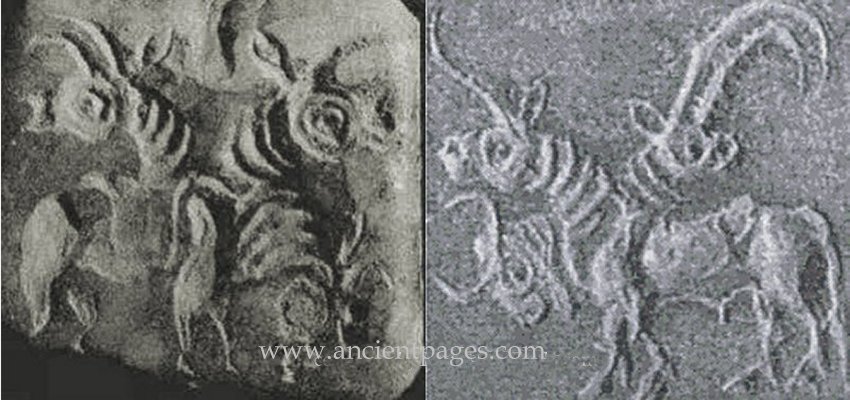Dwarka – Pre-Harappan City That Could Rewrite The History Of The World
A. Sutherland - AncientPages.com - Could Dwarka be the oldest civilization in human history?
Krishna's legendary Dwarka built on the site of an even earlier sacred city, named Kususthali, was a well-planned city with a modern and technologically advanced harbor adjusted to large entering ships. It was inhabited by an advanced society. The city represents one of the four Dhamas (sacred places for pilgrimage) of the Hindu religion.
These places correspond to the four points of the compass. In their vicinity, the great teacher Shankara ((780–812) established his four main centers.
Dwarka - a long-lost mythical city, one of the seven holy cities in Hindu India, is a reality.
The city of Dwarka has been investigated by historians since the beginning of the 20th century. The exact location of this port city has been debated for a long time. Several references from the Mahabharata, the Bhagvata Purana, and the Vishnu Purana have been used to suggest the city's exact location.
The remains of what has been described as a huge lost city, found by researchers not long ago, may force historians and archaeologists to radically reconsider their view of ancient human history.
Krishna's kingdom spread across' northern India and Pakistan, with its capital in ancient Dwarka, on the coast in Gujarat, just near the Pakistan border. However, as a god of war, Krishna had a lot of enemies. His beautiful Dwarka was constantly in danger to be defeated because it was a battlefield for lord Krishna and King Salva, a king of this earth, who developed an intense animosity toward Lord Krishna and strongly vowed to destroy Krishna's city of Dwarka, the sacred text of the Bhagavata Purana says.
A number of sophisticated military activities tortured the beautiful city.
In aerial battles, the gods used a variety of weapons and amazing flying vehicles. One passage in the Sanskrit texts describes a special air battle between the hero Krishna and the dangerous Asura leader, King Salva.
King Salva had a flying machine called "Saubha-pura" which he used when he launched an attack against Krishna's capital Dwarka.
The Mahabharata describes King Salva's attack on Dwarka with a flying machine. It is the description of the battle that was fought with sophisticated technology and advanced weapons, potentially even with a craft attacking from orbit. The spacecraft commenced an attack on the city with the use of energy weapons, which to the on-lookers resembled a discharge of lightning, and it was so devastating that after the attack most of the city lay in ruins.
Salva's incredible and powerful flying machine - equipped with high-tech weapons and described as an "iron city" - was extraordinary; it could hover in the air, float on water, become invisible to the enemy.
With his Saubha-pura, king Salva was able to terrorize and kill many of the Vrishnis, a tribe whose warriors include the great Krishna.
"The cruel Salva had come mounted on the Saubha chariot that can go anywhere, and from it he killed many valiant Vrishni youths and evilly devastated all the city parks," we read in Mahabharata.
Krishna's warriors had no intention of giving up the battle, and continued their fighting and the hero Pradyumna wanted to release what appears to be one of the most dangerous weapons against king Salva, but the highest gods stopped him explaining that: "Not a man in battle is safe from this arrow."
Instead, it was decided that Salva will fall to Krishna and a remarkable aerial battle began again. Krishna's flying machine chased the Asura king in his very fast flying Saubha-pura, but Salva responded firing his weapons.
According to Krishna's, own relation in the Mahabharata:
"His Saubha clung to the sky at a league's length... He threw at me rockets, missiles, spears, spikes, battle-axes, three-bladed javelins, flame-throwers, without pausing. The sky... seemed to hold a hundred suns, a hundred moons... and a hundred myriad stars. Neither day or night could be made out, or the points of compass."
Krishna returned the fire.
"I warded them off as they loomed toward me. With my swift-striking shafts, as they flashed trough the sky. And I cut them into two or three pieces with mine. There was a great din in the sky above."
Around 1500 BC the whole western coast of India mysteriously disappeared along with Dwarka - the great city of gold. The deluge came and the submergence took place immediately after Sri Krishna departed from the world.
This catastrophic event is confirmed by the sacred texts of the Vishnu Purana stating that "on the same day that Krishna departed from the earth the powerful dark-bodied Kali Age descended. The ocean rose and submerged the whole of Dwarka."
The Age of Kali thus ushered in turns out to be none other than the present epoch of the earth - our own. According to the Hindu sages, it began just over 5000 years ago at a date in the Indian calendar corresponding to 3102 BC.

Construction material, pottery, sections of walls, beads and sculptures were recovered from the site.
It is an age, warns the Bhagavata Purana, in which people will be greedy, take to wicked behavior, will be merciless, indulge in hostilities without any cause, unfortunate, extremely covetous for wealth and worldly desires," Hancock writes in his book "Underworld")
Also in the Mahabharata, there is a specific account given by Krishna’s main disciple Arjuna about the submerging of Dwaraka, by the sea which reads as follows:
"The sea, which has been beating against the shores, suddenly broke the boundary that was imposed on it by nature. It rushed into the city, coursing through the beautiful city streets, and covered up everything in the city. I saw the beautiful buildings becoming submerged on by one. In a matter of a few moments, it was all over. The sea had now become as placid as a lake. There was no trace of the city. Dwaraka was just a name; just a memory..." -
For more than 5,000 years Dwaraka was treated only like a myth, handed over from one generation to another.
The following story entitled "Harappan-like Ruins Discovered In Gulf of Cambay" made headline news in the Indian press in 2001:
As reported by The Hindu, "in a major marine archaeological discovery, the Indian scientists have come up with excellent geometric objects below the sea-bed in the western coast, similar to the Harappan ruins."
The discovery was made ... when the multi-disciplinary underwater surveys, carried out by the National Institute of Ocean Technology (NIOT), picked up images of several "excellent geometrical objects" which were normally man-made in the nine-kilometer-long stretch, west of Hazira in Gujarat.
According to experts, this was the first time that such sites have been reported in the Gulf of Cambay. It is important to add that the underwater marine structures found in the Gulf of Cambay are similar to the structures discovered at the archaeological sites of Harappan and pre-Harappan times.
The acoustic images showed the area lined with well-laid house basements like features partially covered by sand waves and sand ripples at 30-40 meter water depth. At many places, channel-like features were also seen indicating the possible existence of possible drainage in the area, he said."
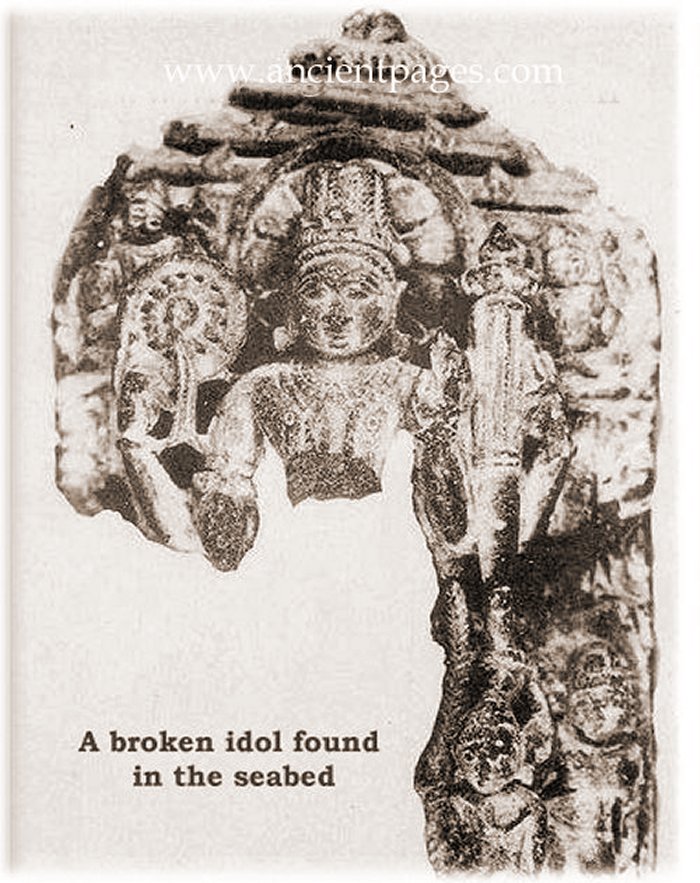 Vishnu idol found during an onshore excavation in Dwarka. The Mahabharata states that the people of ancient Dwarka were Vishnu devotees. The age of the idol has been scientifically determined and it corresponds with the traditional age associated with the Mahabharata.
Vishnu idol found during an onshore excavation in Dwarka. The Mahabharata states that the people of ancient Dwarka were Vishnu devotees. The age of the idol has been scientifically determined and it corresponds with the traditional age associated with the Mahabharata.
The vast city - which is five miles long and two miles wide - is believed to predate the oldest known remains in the subcontinent by more than 5,000 years. Mainstream scientists maintain that ancient Indian culture/civilization goes back some 4-5 thousand years. Yet the ruins below the Gulf of Cambay go back at least 9 thousand years, i.e. to the time when the area submerged underwater.
This means that the city must have existed before the flooding, i.e. at least 9 thousand years ago.
The Gulf of Cambay waters revealed sandstone walls, a grid of streets, and some evidence of a seaport 70 feet underwater.
About 2,000 artifacts were found 40 meters under the ocean. The artifacts were spread over an area of 9 kilometers. There were remains of rectangular buildings, bathing facilities, chiseled stone tools, broken pieces of potteries, jewelry, and human jaws and teeth.
Identical pottery has been found in the submerged city of Dwarka. Thus the results have proved that the account in Mahabharata as to the existence of a beautiful capital city of Dwarka of Sri Krishna was not a mere figment of imagination but it did exist, according to another scholar Nanditha Krishnan.
The ruins have been proclaimed the remains of Krishna's lost city of Dwarka.
Excavations conducted at the city by Dr. S.R. Rao (1922 - 2013) an Indian archeologist who led teams credited with the discovery of a number of Harappan sites including the famous port city of Lothal in Gujarat and founder of the Marine Archaeology Center of the National Institute of Oceanography of India (NIO) have finally revealed that the descriptions as found in these sacred texts are not to be discarded as fanciful.
It has greatly narrowed the gap in Indian history by establishing the continuity of the Indian civilization from the Vedic Age to the present day, according to Dr. S R Rao.
There is a certain pilgrim city called Dwarka, a place of commemoration of the lost antediluvian city of Krishna and it is a destination for all Krishna worshippers. In the city, there is a magnificent Dwarkadish temple, sacred to Lord Krishna. During excavation works, archaeologists detected many layers of earlier constructions beneath and around the temple. Apparently, the temple had been built on something even older. In addition, underwater ruins have also been found between 3-10 meters from the shore, where today's Dwarka is located.
The discovery of Dwarka - an important historical landmark of India - has set to rest the doubts expressed by historians about the historicity of Mahabharata and the very existence of Dwarka city.
The antediluvian Dwarka was not a fable, but a city that really existed and this fact may soon force us to re-evaluate and rewrite not only the history of the Indian subcontinent and the whole world.
Written by – A. Sutherland AncientPages.com Staff Writer
Copyright © AncientPages.com All rights reserved. This material may not be published, broadcast, rewritten or redistributed in whole or part without the express written permission of AncientPages.com
Expand for referencesReferences:
G. Hancock, Underworld: The Mysterious Origins of Civilization
D. Frawley, Gods, Sages and Kings: Vedic Secrets of Ancient Civilization
More From Ancient Pages
-
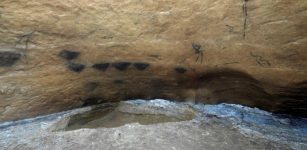 Cave Art In ‘Painting Room’ – At Ojo Guareña (Burgos) Is Over 12,000 Years Old
News | Oct 2, 2020
Cave Art In ‘Painting Room’ – At Ojo Guareña (Burgos) Is Over 12,000 Years Old
News | Oct 2, 2020 -
 Who Was The Sapa Inca?
Featured Stories | Jul 29, 2024
Who Was The Sapa Inca?
Featured Stories | Jul 29, 2024 -
 Mysterious Books With Dangerous Secret Knowledge Deliberately Hidden From Public View
Featured Stories | Jan 8, 2024
Mysterious Books With Dangerous Secret Knowledge Deliberately Hidden From Public View
Featured Stories | Jan 8, 2024 -
 Viking Women Were More Prominent Than Previously Thought – Archaeological Discoveries Reveal
Archaeology | Sep 6, 2019
Viking Women Were More Prominent Than Previously Thought – Archaeological Discoveries Reveal
Archaeology | Sep 6, 2019 -
 Monumental Fortification That Protected The Kings Of Jerusalem Unearthed In The City Of David
Archaeology | Jul 23, 2024
Monumental Fortification That Protected The Kings Of Jerusalem Unearthed In The City Of David
Archaeology | Jul 23, 2024 -
 Rare Ancient Jawbone Of A Denisovan Who Lived 200,000 Years Ago Discovered In Taiwan
Evolution | Apr 14, 2025
Rare Ancient Jawbone Of A Denisovan Who Lived 200,000 Years Ago Discovered In Taiwan
Evolution | Apr 14, 2025 -
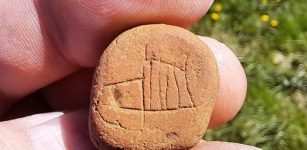 Small Stone Carved With A Viking Ship May Be Oldest Picture Ever Found In Iceland
Archaeology | Jun 16, 2023
Small Stone Carved With A Viking Ship May Be Oldest Picture Ever Found In Iceland
Archaeology | Jun 16, 2023 -
 Old Age Isn’t A Modern Phenomenon: Many People Lived Long Enough To Grow Old In The Olden Days, Too
Featured Stories | Aug 11, 2022
Old Age Isn’t A Modern Phenomenon: Many People Lived Long Enough To Grow Old In The Olden Days, Too
Featured Stories | Aug 11, 2022 -
 Mystery Of The Lost Continent Destroyed By An Ancient Cataclysm – Wars Between The ‘Yellow Men And Black’ Men – Part 1
Ancient Mysteries | Aug 10, 2021
Mystery Of The Lost Continent Destroyed By An Ancient Cataclysm – Wars Between The ‘Yellow Men And Black’ Men – Part 1
Ancient Mysteries | Aug 10, 2021 -
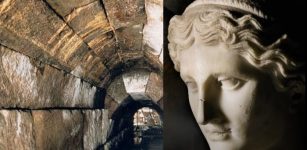 Venus Cloacina: Roman Goddess Of Sewers And Drains
Featured Stories | Dec 19, 2019
Venus Cloacina: Roman Goddess Of Sewers And Drains
Featured Stories | Dec 19, 2019 -
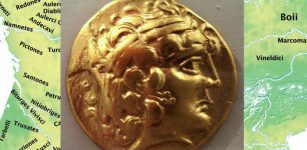 Cenomani People: Their Pre-Roman Celtic Cemetery Reveals Funerary Customs
Archaeology | Apr 18, 2019
Cenomani People: Their Pre-Roman Celtic Cemetery Reveals Funerary Customs
Archaeology | Apr 18, 2019 -
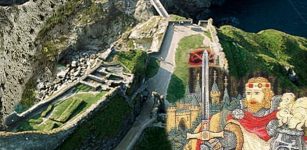 Was Tintagel Castle A Fortress Used By Iconic Hero King Arthur?
Featured Stories | Jul 12, 2022
Was Tintagel Castle A Fortress Used By Iconic Hero King Arthur?
Featured Stories | Jul 12, 2022 -
 Family Looking For Lost Gold Ring Finds Viking Age Artifacts In Their Garden On The Island Of Jomfruland
Archaeology | Sep 30, 2023
Family Looking For Lost Gold Ring Finds Viking Age Artifacts In Their Garden On The Island Of Jomfruland
Archaeology | Sep 30, 2023 -
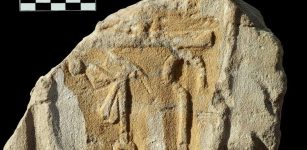 Gebel El Silsila: Remains Of Long-Lost New Kingdom Temple Found
Civilizations | May 19, 2015
Gebel El Silsila: Remains Of Long-Lost New Kingdom Temple Found
Civilizations | May 19, 2015 -
 Mysterious Gympie Pyramid: Evidence Of An Ancient Lost Civilization In Australia?
Civilizations | Feb 13, 2020
Mysterious Gympie Pyramid: Evidence Of An Ancient Lost Civilization In Australia?
Civilizations | Feb 13, 2020 -
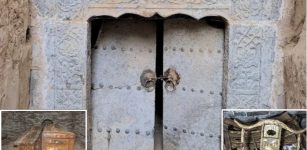 Huge Untouched Vassal King Tomb From The Ming Dynasty Discovered In Xinfu District, China
Archaeology | Mar 22, 2024
Huge Untouched Vassal King Tomb From The Ming Dynasty Discovered In Xinfu District, China
Archaeology | Mar 22, 2024 -
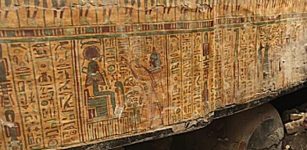 At Least 20 Ancient Colored Wooden Coffins Discovered In Asasif Necropolis, Luxor
Archaeology | Oct 15, 2019
At Least 20 Ancient Colored Wooden Coffins Discovered In Asasif Necropolis, Luxor
Archaeology | Oct 15, 2019 -
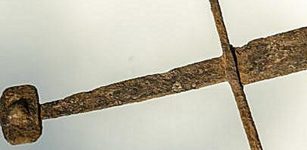 Medieval Well-Preserved Sword Discovered In A Peat Bog In Poland
Archaeology | Jun 21, 2017
Medieval Well-Preserved Sword Discovered In A Peat Bog In Poland
Archaeology | Jun 21, 2017 -
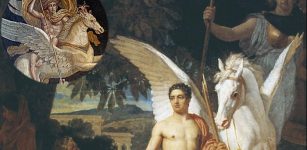 Bellerophon: Great Hero Of Homer’s Iliad Who Was Punished By Gods For His Pride And Arrogance
Featured Stories | Jul 13, 2021
Bellerophon: Great Hero Of Homer’s Iliad Who Was Punished By Gods For His Pride And Arrogance
Featured Stories | Jul 13, 2021 -
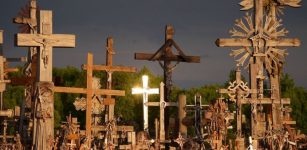 Hill Of 100,000 Crosses In Lithuania Survived Against All Odds
Featured Stories | May 23, 2017
Hill Of 100,000 Crosses In Lithuania Survived Against All Odds
Featured Stories | May 23, 2017


